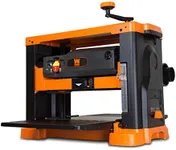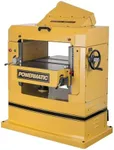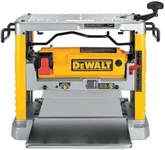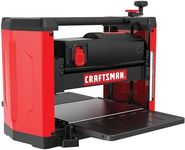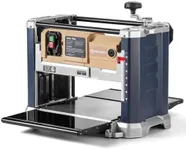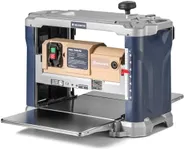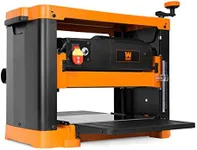Buying Guide for the Best Planer Thicknesser
Choosing the right planer-thicknesser can be a game-changer for your woodworking projects. This versatile tool helps you achieve smooth, even surfaces and consistent thickness in your wood pieces. To make an informed decision, it's essential to understand the key specifications and how they align with your needs. Here’s a breakdown of the most important specs to consider when selecting a planer-thicknesser.Cutting WidthThe cutting width refers to the maximum width of wood that the planer-thicknesser can handle. This is important because it determines the size of the wood pieces you can work with. Cutting widths typically range from 10 to 20 inches. If you work with larger boards, you'll need a machine with a wider cutting capacity. For smaller projects or hobbyist use, a narrower width may suffice.
Cutting DepthCutting depth indicates how much material the planer-thicknesser can remove in a single pass. This is crucial for efficiency and achieving the desired thickness quickly. Cutting depths usually range from 1/8 inch to 1/4 inch. For heavy-duty work, a deeper cut is beneficial, while lighter, more precise work may require a shallower cut.
Motor PowerMotor power, measured in horsepower (HP), determines the machine's ability to handle tough materials and maintain consistent performance. Higher horsepower (2 HP and above) is ideal for heavy-duty tasks and frequent use, while lower horsepower (1-1.5 HP) is suitable for lighter, occasional work. Consider the type of wood and the frequency of use when choosing motor power.
Feed RateThe feed rate is the speed at which the wood is fed through the planer-thicknesser, usually measured in feet per minute (FPM). A higher feed rate allows for faster processing but may compromise the finish quality. Adjustable feed rates are ideal as they offer flexibility for different types of wood and desired finishes. For fine, detailed work, a slower feed rate is preferable.
Cutterhead TypeThe cutterhead type affects the smoothness of the finish and the noise level of the machine. There are two main types: straight knife and helical (spiral) cutterheads. Straight knives are more common and less expensive but can be noisier and may leave slight lines on the wood. Helical cutterheads are quieter and provide a smoother finish but are more costly. Choose based on your budget and the quality of finish you require.
Dust CollectionDust collection is essential for maintaining a clean and safe workspace. Planer-thicknessers with built-in dust collection ports can be connected to a vacuum or dust collection system to efficiently remove wood shavings and dust. Look for machines with effective dust collection features, especially if you work in a small or enclosed area, to ensure a healthier working environment.
Table Size and ExtensionThe size of the table and the availability of extensions can impact the stability and support of the wood during planning. Larger tables and extensions provide better support for longer or wider boards, reducing the risk of snipe (uneven cuts at the ends of the boards). If you frequently work with large pieces, consider a planer-thicknesser with a spacious table and optional extensions.
